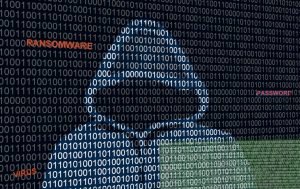 Although that new smart refrigerator might seem like a fun gadget and great way to sync up grocery lists, smart appliances have the potential to become vectors in malicious power grid attacks. Or what about the increasingly popular addition of a solar plus storage solution or an EV charging station in individual homes? These home energy hubs, connected to the power grid and often linked with a host of devices via a mobile phone, pose another layer of risk that is only beginning to be explored. As the World Economic Forum draws attention to a worldwide “cyber pandemic,” electrical grid breaches remain an ongoing point of alarm. Power grids are more exposed than ever to cyberattacks, thanks in part to the vast expansion of (often poorly secured) consumer internet-connected devices, large remote-work networks and new smart grid technologies that connect power meters remotely to aging grid infrastructure. As we look to the future, the rapidly evolving technologies that are necessary to enable distributed energy resources and virtual power plants, such as residential energy storage, home energy hubs and EV bidirectional charging (V2H, V2G or V2X), have the potential to dramatically redefine those risks—for the better or the worse.
Although that new smart refrigerator might seem like a fun gadget and great way to sync up grocery lists, smart appliances have the potential to become vectors in malicious power grid attacks. Or what about the increasingly popular addition of a solar plus storage solution or an EV charging station in individual homes? These home energy hubs, connected to the power grid and often linked with a host of devices via a mobile phone, pose another layer of risk that is only beginning to be explored. As the World Economic Forum draws attention to a worldwide “cyber pandemic,” electrical grid breaches remain an ongoing point of alarm. Power grids are more exposed than ever to cyberattacks, thanks in part to the vast expansion of (often poorly secured) consumer internet-connected devices, large remote-work networks and new smart grid technologies that connect power meters remotely to aging grid infrastructure. As we look to the future, the rapidly evolving technologies that are necessary to enable distributed energy resources and virtual power plants, such as residential energy storage, home energy hubs and EV bidirectional charging (V2H, V2G or V2X), have the potential to dramatically redefine those risks—for the better or the worse.
Articles Posted in Cybersecurity
News of Note for the Internet-Minded (11/8/22) – AI Continues to Demonstrate Its Double-Edged Potential
In today’s News of Note, anxieties continue to grow over AI-generated art, effective cybersecurity for the high-tech era, and the impact of facial recognition and gunshot detection technology on human rights.
Shining Light on the Algorithms in Your Company’s Black Box
 Artificial intelligence has long since evolved from a technology with exciting potential to a near ubiquitous and integral component in the day-to-day conduct of many businesses. Take the automotive and aerospace industries—each is undergoing massive changes and movements toward more competitive, efficient and innovative uses of technology and AI in order to meet consumer demands, create more efficient factories, optimize supply chains, and achieve better performance in operations and production. Using modern software and AI has become essential across many companies.
Artificial intelligence has long since evolved from a technology with exciting potential to a near ubiquitous and integral component in the day-to-day conduct of many businesses. Take the automotive and aerospace industries—each is undergoing massive changes and movements toward more competitive, efficient and innovative uses of technology and AI in order to meet consumer demands, create more efficient factories, optimize supply chains, and achieve better performance in operations and production. Using modern software and AI has become essential across many companies.
News of Note for the Internet-Minded (5/27/22) – Ransomware Attacks, Crypto Crashes and Genetic NFTs
In this week’s News of Note, ransomware continues to ravage institutions—including a 157-year-old college and the government of Costa Rica—AI learns to accurately predict a patient’s race based on their medical images, cryptocurrency crashes, and more.
News of Note for the Internet-Minded (4/19/22) – IP and NFTs, Virtual Reality & Ransom(every)ware
News of Note for the Internet-Minded (3/11/22) – AI Tools, NFT Trading and Ransomware Misdeeds
Is Russia’s invasion of Ukraine altering the landscape of the internet? Can AI help historians decipher ancient texts? How did two siblings allegedly use a digital token to defraud investors? Explore this and more in today’s News of Note.
Protect, Mitigate and Recover: Making Your Company Ransomware-Resistant
As is the case with many types of cybersecurity threats, shielding one’s company from ransomware attacks calls for measures that simultaneously build the strongest protections possible while also adopting mitigation strategies that assume those measures will fail.
News of Note for the Internet-Minded (2/17/22) – Metaverse Gambling, Vanishing NFTs and AI Gaming
Shifting Landscapes and Veiled Identities: The Usual Suspects Behind Ransomware Attacks
 The actors behind ransomware tend to fall into two categories: cybercriminal gangs, often based in Eastern Europe, and groups backed by economic outcasts like Iran, Russia and North Korea. Historically the first prefer a shotgun approach; the second behave more like snipers. Here are a few of the groups that have been linked to recent ransomware and are still a threat.
The actors behind ransomware tend to fall into two categories: cybercriminal gangs, often based in Eastern Europe, and groups backed by economic outcasts like Iran, Russia and North Korea. Historically the first prefer a shotgun approach; the second behave more like snipers. Here are a few of the groups that have been linked to recent ransomware and are still a threat.
 Internet & Social Media Law Blog
Internet & Social Media Law Blog




